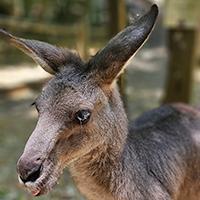Leaderboard
Popular Content
Showing content with the highest reputation since 12/19/2025 in all areas
-
8 points
-
6 points
-
A collection of videos to wish you a Merry Christmas and Happy New Year 2026. All videos are themed around winter, Christmas, New Year, and Christmas miracles. Merry Christmas and Happy New Year to everyone! I wish you all good health, joy and happiness, love, kindness, success in all your endeavors and more frequent meetings with friends! Enjoy watching.5 points
-
Hello everyone Thanks for commenting and feedback on the previous version of this. I made some changes to the previous version, so if you have 5 minutes to spare, have a look at this version.5 points
-
Hi, Please share your impressions of version 12.0 Beta. If you find any problem, please start a new topic for each one. Happy Christmas! Igor,4 points
-
New transitions added in PTE AV Studio 12: Spots, Rotating Linear Wipe, Push Smooth Click to play video sample: New Transitions in V12.mp44 points
-
Absolutely love the sample project included with the new beta! Will be wonderful to explore many of the new features by going through those images and transitions. Much easier than aimlessly clicking buttons or printing out Igor's description sheet and looking for the updates. Great job and beautiful images, Barry Beckham! And I love the winking koala at the end! One of the changes that stands out to me so far is the ability to use a parent object to change the colors and opacity of it's associated children. Having to modify those settings for each one of those child images / objects in the past was a bit annoying.4 points
-
Hi, PTE AV Studio 12 Pro (Beta) is available all members of this forum: Download For Windows: https://files.wnsoft.com/test/pte12abc/pteavstudio-setup.exe For Mac: https://files.wnsoft.com/test/pte12abc/PTE-AV-Studio.dmg PTE AV Player for Mac: https://files.wnsoft.com/test/pte12abc/PTE-AV-Player.dmg A free license key for the Beta version: D206I-01ZKI-GH8S2-HSS8X-E7N7D System Requirements Windows 10 or Windows 11. macOS 11 Big Sur - macOS 26 Tahoe (Apple Silicon or Intel chip). Important notes You can keep your existing version of PTE AV Studio 11.0 and use both versions together. We recommend to untick an option “Associate .pte projects...” when you install a Beta version. For new customers. If you purchase version 11.0 today or later, you'll get a free upgrade to a final version 12.0 when it's ready (in March, 2026). We continue to work on version 12.0 and plan to add new features and new slide styles before the final version. _________________________________________________ What's New in PTE AV Studio 12 Pro: Sound Object Create impressive slideshows and AV shows with impactful sound effects. The new Sound object lets you play short audio files to enhance your slideshows and AV shows. Add whoosh sounds for fast transitions, subtle clicks when images appear, or any other short audio effects that bring your slideshow to life. Adjust volume for individual video clips and sound objects with precision. Voice Recording on Mac Mac users can now record voice-overs directly in PTE AV Studio without external tools. Slow-Motion and Video Speed Control Take complete control over video playback. Adjust video speed using key points - speed up, slow down, or freeze the action exactly where you need it. Insert pauses inside your video clips to emphasize key moments. The new frame interpolation creates smooth slow-motion effects by blending frames together, eliminating jerky playback when slowing down your footage. Modern Video Formats and AV1 Encoder Create content for social media and the web. PTE AV Studio 12 adds full support for vertical video (9:16 for YouTube Shorts, TikTok, and Instagram Reels) and square format (1:1 for Instagram posts). New resolutions including 2560x1440, 1080x1920, 720x1280, and 1080x1080 cover all modern platforms. The "Auto" resolution preset automatically matches your project settings for quick exports. The revolutionary AV1 encoder produces videos up to 50% smaller than H.264 while maintaining the same visual quality - perfect for web publishing. The improved Video Export interface with "Show/Hide Advanced Options" keeps things simple yet powerful. The "Fast decode (web)" option creates optimized videos for quick loading and playback on your website. You can even pause video encoding and resume later. New Creative Effects Bring your slideshows to life with stunning visual effects. The Dynamic Gradient map creates color transformations and artistic looks. Chromatic Displacement map adds glitch effects and distortions for modern, eye-catching visuals. The Instant speed modifier disables interpolation between keyframes for snappy, precise animations. Blur and Unsharp mask can now be adjusted separately for parent and child objects. Quick Search. New Slide Styles and Transitions Find the perfect slide style or transition instantly. Type a keyword and PTE AV Studio will show you matching results immediately. No more scrolling through hundreds of options - just type "zoom", "push" or "fade" and get what you need. New transitions: Spots, Push Smooth, Rotating Linear Wipe. New slide style: Zoom Out with Fade. Faster Project Backups Backup your projects 2-3 times faster. The Create Backup in ZIP command now supports multiple files with the same name in different folders. Save precious time when archiving large projects with hundreds of high-resolution images and video clips. Other Improvements Export Slides to Images can now include transition effects Improved audio/video synchronization and smoother playback for variable frame rate videos HDR video support (Rec.2020 and HLG color spaces) Smaller executable show files (reduced by 3 MB) Transition group expand/collapse state is now remembered P.S. Click the "Follow" button at the top of this page to receive notifications about new Beta releases.4 points
-
Merry Christmas to you and your team Igor! Thanks for the early Christmas present! I look forward to working with this new exciting version!3 points
-
Merry Christmas and happy New Year to everyone! We wish peace, joy, and good health to all of you and your loved once! Alex55 The Link to the Project files provided3 points
-
Thank you, Igor. I wish you and your team a Happy New Year. I’m looking forward to seeing what v12 has to offer.2 points
-
Happy New Year! Merry Christmas! May this year bring joy, happiness, and fulfillment of your wishes! The slide has been compiled. In the latest version PTE.2 points
-
Hi, In PTE AV Studio 12 we added a new speed modifier - "Instant". It allows you to achieve an instant change of any animation parameter between 2 keyframes (without smooth interpolation).You can apply it to Pan, Zoom, Rotate, Opacity and other animation parameters. If you have 2 keyframes, add the "Instant" modifier to the 1st keyframe. Download a demo project: Instant Animation.zip Video example: Instant Animation.mp4 Screenshot:2 points
-
Hello to all forum members. I bring to your attention a festive Christmas video. Description and download link for the YouTube video. Congratulations on the wonderful upcoming holidays. I wish you creative success and good health.2 points
-
Well, finally, we've finally got it! Thanks to Igor and the team for the pre-holiday surprise! I loved all the new features, each one is useful and improves the functionality of our favorite program! I especially appreciated the sound object, as it's been a long-awaited need. I think we'll get some interesting transitions with sound! I also really liked the ability to use video with keyframes, it's fantastic! I also really liked the RGB displacement effect (hello, glitches)! And you can definitely create something beautiful with the gradient map! Overall, thank you for your work! We'll try out all the new features and write more about them. Merry Christmas and Happy New Year!2 points
-
Congratulations on the new version. It runs very well on my Mini PC with Core i 5. We'll be spending quite a bit of time with it. Warning: highly addictive! I would like to see various instructions for the updates posted online (especially for saving transitions and themes so that they can be restored). I'm already looking forward to the final version. Best regards1 point
-
Igor. Congratulations to you and your team on creating the new version of the program! I wish you continued success and new exciting projects! Merry Christmas! Happy New Year! Warmth, joy, and new achievements! I checked out all the new features added to the program. Everything works great. I inserted a five-second clip. Everything worked perfectly, from acceleration to complete video stop. Thank you very much for your work.1 point
-
The amount of work and time spent "under the hood" is quite remarkable. Thank you, Igor and team. Merry Christmas and good luck in the New Year, Kieron1 point
-
Thanks to Igor and the whole team for the new version! I haven't yet figured out how to speed up and slow down video using keyframes. I'd be happy to see a tutorial on how to use this. I really like the AV1 format. The output file is about 1.5 times slower than MP4, but its size is twice (or more) smaller than H.264. Great! I wanted to ask if this version of the program will feature video looping (within a slide). We've been talking about this for a while now. Merry Christmas and Happy New Year! I wish you and the entire WnSoft team joy, happiness, love, health, and success in all your endeavors!1 point
-
I understand how important this option for you (dynamic random slide order). We removed this feature in 2013 (since version 8.0) for 2 main reasons: 1. Technical complexity - this option made it very difficult to add new features to PTE. It created problems with: - Project duration (when "Keep full slide duration" is enabled); - Audio files linked to slides; - Linked video clips; And possibly other issues. 2. Modern workflow - most users now create video files instead of EXE shows, and random order is not applicable for video files at all. As an alternative, we added a new command that randomly shuffles slides once when you edit a project. I understand this doesn't meet your needs, but unfortunately we can't bring back the old feature due to these technical limitations. I'd be interested to hear what other users think about this. P.S. I moved your original message to a new topic here.1 point
-
Hi Mary, Thanks for your wishes and response! We haven't yet updated Sample Project for the new effects in V12. It will be done later before the final version. Hi Aleina, Thanks for your first impressions on PTE 12 Beta! We hope to add more new functions and effects before the final version. Try new built-in transition "Spots". It uses a new Gradient displacement map effect added in V12. You can recreate the same effect in a custom transition or slide style. We added a new preset/template for a mask stencil - "Spots" (when you choose "Gradient map" mode. Setting "Width %" parameter around 1-5 in the Mask container object you can reach more sharp edges of this effect. Also I recommend to try a new modifier in Animation speed > Instant. It disables smooth animation of parameter (Pan, Zoom, Rotate, etc) between 2 keyframes.1 point
-
Are all the files here without copyright music? Music is my life, so the music I love I like to use in my private videos. If you are all careful about copyright music files, can you suggest the best music files without copyright?1 point
-
Hi Thanks for sharing this with Forum members. Here is my version of the template with best wishes for a safe and happy Christmas with a prosperous and peaceful 2026 Mark and Geraldine.1 point
-
I would like to thank Jill and others who quickly answer PTE queries and provide valuable insights to forum members. I know that I personally have gathered a greater knowledge of the program through her. Kieron1 point
-
Hi everybody, Here's couple of new Styles with Transition:https://drive.google.com/file/d/1MEGRUVYCXZ3KBLNKOKeT9GptAKp3xD3F/view?usp=sharing I've used them with some variations to make flashback kind of slideshow. It's posted below. Best Alex551 point
-
Sort the images before importing by Date/Reverse order or Name. Apply the style to the images before or after importing. Publish as a video to view. Many newer cameras have a video timelapse option. Camera shutter speed should be 1/2 capture frame rate to add motion blur. If you capture at 5 second intervals the shutter speed should be 2.5 seconds. Thanks, Tom Update: Sep. 5 2025 Added 15 fps and 24 fps styles. Update Sep. 6, 2025 Added frame blending (dissolve transition) style for smoother video. Blending attempts to add synthetic motion blur but can create ghost images for fast moving objects. I also renamed regular version to quick. Update Sep 10,2025 Frame blending moved to another post in this thread. Timelapse Quick 30 fps.ptestyle Timelapse Quick 24 fps.ptestyle Timelapse Quick 15 fps.ptestyle1 point
-
Hi Richard, Sasha (AleAle 5025 ) made many similar styles. Look here and remake as you need. Pattern. An Old Photo Album. Flipping through the photos Book 2 of 2022 Book Style I hope this helps you.1 point
-
Hi everybody, Here's a another attempt to deal with all those family pictures.... Here's the Link:https://drive.google.com/file/d/1oeh4F07uGqbmANaEvc1q456h8XXOK-TY/view?usp=sharing1 point
-
Created styles from some geometric shapes in motion. Triangle, circle, square and some variations with them. Total there are 12 styles. The background can be changed at your discretion. Download styles: https://yadi.sk/d/jLBrhNVJgCzO1Q Enjoy viewing and using styles.1 point
-
Hello everyone, Here's a style made from a tutorial created for After Effect and available on the "Effect For You" Youtube channel. For the PTE adaptation, I've slightly simplified the tutorial proposed by the EFY channel, especially by removing the particle effects on the appearance of the text. For ball movements, I've added the unofficial Damping factor parameter to the oscillation function. The style can be downloaded here. With a little advance, happy holidays. Pascal.1 point
-
Hi South Coast. Adaptation of the Adobe After Effects Download: https://disk.yandex.ru/d/GmklwZtgiHx4ZQ1 point
-
Hi! In the PTE program, I wanted to do something similar to the 3-d style. Here is such a room turned out. I wish you all success in your creative work. Download: https://disk.yandex.ru/d/pBeWWGpGENelwQ Installing a photo in a Book1 point
-
A few examples of styles for a phone/smartphone. Download: https://yadi.sk/d/kWTEBlSeyH5dYQ Enjoy watching.1 point
-
Hi everybody, Another attempt to fit a phone into TV screen. There're a several free Styles coming with. Note, there's no transitions between slides, so if slide begins with pictures in view those pictures are the same as the pictures at the end of the previous slide. Thanks for watching Here's the Link:1 point
-
Hi everybody. The style is an old photo album, please tell me who will see errors in the work. Background files from Adobe Effect Replaced the archive The style for the template. This is an old photo album. I've made a few minor corrections. The template has been updated. Success. Download: https://disk.yandex.ru/d/TI4ByKCwFm9Gfg https://disk.yandex.ru/d/WzdeyJKOvOJPnA Video review installing photos, replacing text.1 point
-
Pattern. An Old Photo Album. Hello. Simplified installation of photos in the Old photo album template. Replaced the archive. Download the updated version of the book template. Success. Download: https://disk.yandex.ru/d/gZQYat5_J0wplQ1 point













